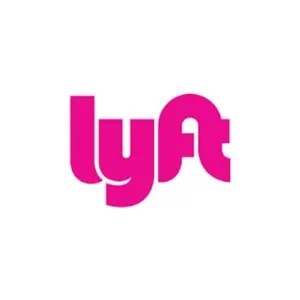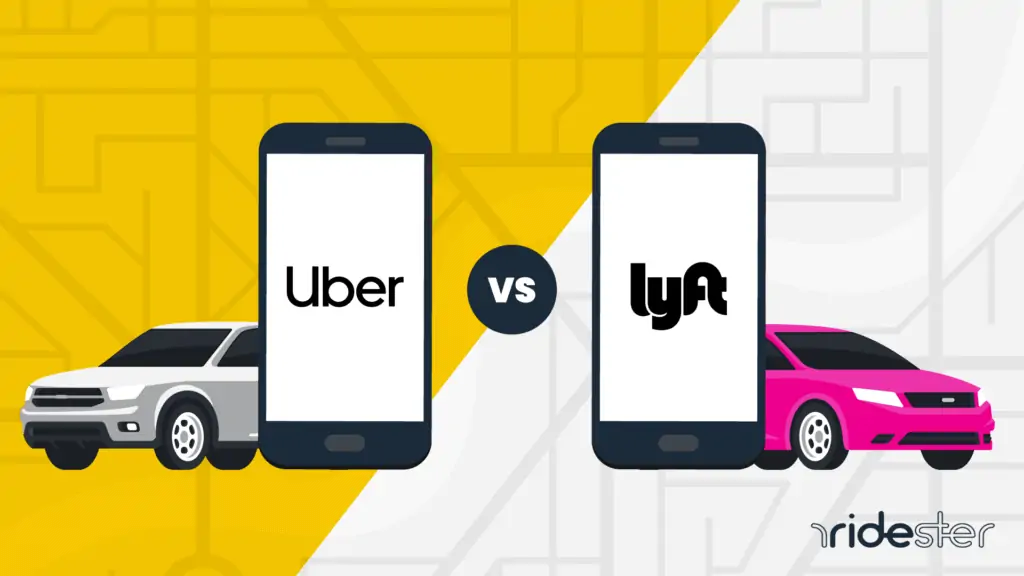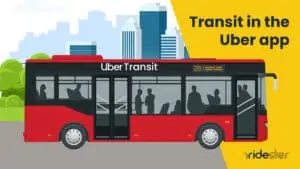Ridesharing apps are getting lots of people around these days. Two of the most popular ridesharing apps – Uber and Lyft – have exploded in growth over the last few years.
But which is best, and when should you choose one over the other? This article will provide an in-depth comparison of these two companies based on 7 different criteria:
- Pricing
- The App Features & Ease of Use
- Coverage Areas
- Vehicle Types & Service Options
- Safety of the Drivers & Vehicles
- Helpfulness of the Customer Support
- Innovation
- Brand Image
Let’s dive right in!
At a Glance: Uber Vs Lyft Side-By-Side
If you don’t want to read the entire post, we’ve put together a table to help you quickly see the similarities and differences between the two companies:
| Category | Uber | Lyft | Brett’s Pick |
|---|---|---|---|
| General Overview | Global presence, diverse services including SUVs, wheelchair-accessible vehicles, food delivery, and more. | Primarily in the U.S. and Canada, offering a range of services from regular to luxury options. | N/A |
| Pricing | Similar pricing to Lyft; uses Surge pricing during high-demand times. | Typically cheaper in big cities; uses Prime Time pricing during high demand. | Lyft |
| App Design & Ease of Use | More features, upfront cost estimation, less user-friendly due to added features. | Simpler interface, transparency in pricing is improving. | Tie |
| Vehicle Types/Options | Broad range including UberX, Uber Pool, Uber Comfort, Uber Black, Uber Lux, etc. | Standard Lyft, Lyft XL, Lyft Lux, Shared Rides, and more. | Uber |
| Availability & Coverage | Available in 58 countries and 300 cities worldwide. | Available in about 46 U.S. states and Canada. | Uber |
| Safety | Generally safe with background checks, safety features in-app. Some incidents reported. | Similar safety protocols; notable safety incidents but perceived as safer by some. | Uber |
| Customer Support | Declining support quality, canned responses. | More helpful, better problem-solving approach. | Lyft |
| Innovation | Advanced features like tiered service options, rigorous driver rating, surge pricing, built-in tipping. | Lyft Line for shared routes, Lyft Plus for larger groups, focus on driver and rider community. | Uber |
| Brand Image | Faced scandals, lawsuits, and PR issues. | Generally positive image, less negative publicity. | Lyft |
| Overall Recommendation | Preferred for its global presence, vehicle options, and innovative features. | Chosen for better pricing, customer support, and brand image. | Depends |
Brett’s Take: Thoughts From an Expert
To me, Uber and Lyft are practically the same. I use them both equally, as they provide a similar experience at a nearly identical price point.
Lyft was initially more geared toward low-cost “friendly” rides, while Uber took a professional and elegant approach. With time, however, both companies have rolled out similar services that appeal to a wide variety of customers.
I personally use both apps, but the one I choose over the other is almost solely dependent on two things: 1) pricing at the time I need a ride, and 2) driver availability and distance of pickup.
My suggestion is this:
When you need a ride, open both apps and check the time of pickup and cross reference that with the price. You will usually find one is either much closer to pick you up, or one will be drastically cheaper than the other.
Weigh the price against the pickup time, and then make a decision from there. All other things considered, these are the two most important factors when choosing between one and the other.
Now let’s take a detailed look at each category.
The In-Depth Breakdown of Uber Vs Lyft
I’ve spent a considerable amount of time and effort using each service over the last few years, having taken hundreds of rides in the process. I’ll look at both services in detail, and then offer my personal experience for each based on my experiences with both services.
1. Uber vs. Lyft Pricing
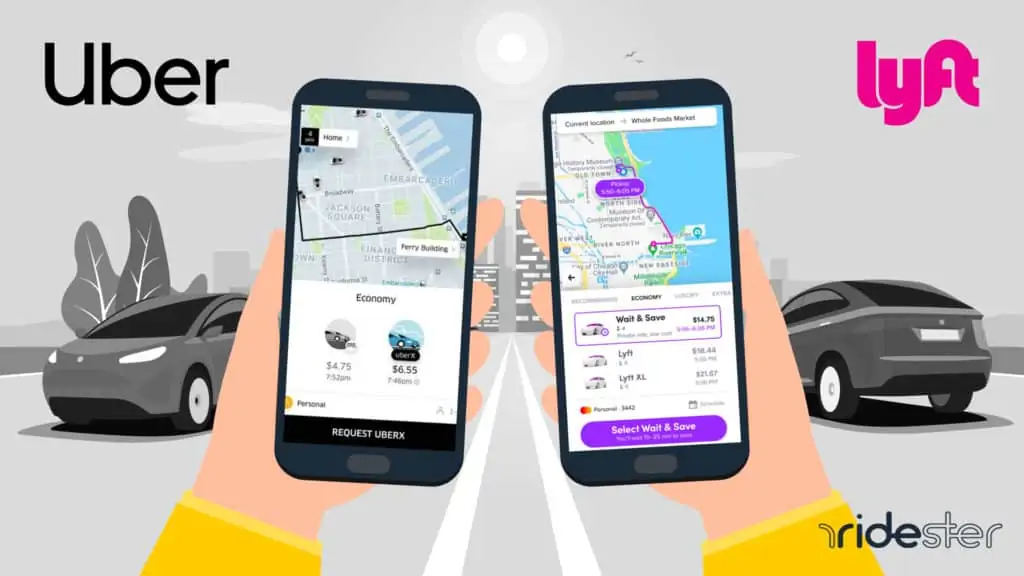
Uber and Lyft compete heavily on pricing, attempting to lure customers away from each other by constantly undercutting on price.
However, when we take a more in-depth look, we find that for the most part, the companies charge about the same rates, although prices can vary from city to city.
Both companies charge around $1.00 to start a ride and then charge $1.50 per mile, around .25 cents per minute. When we think about the average cost per mile, it lands at about $2.00 per mile which is much more cost-effective when compared to a taxi.
Recommended Resources:
Both companies use some form of price surging – meaning fare prices go up during times when rider demand is greater than normal. Uber calls it Surge, and Lyft calls it Prime Time.
Surge Pricing for Uber
Whenever the ride demand increases, Uber adds a surge rate multiplier on standard fares. The surge multiplier changes based on location, and come up to 1.3x or 2.1x to the base, time, and distance fare.
Prime Time for Lyft
Lyft, on the other hand, charges the extra fee in form of a percentage that gets added to the base ride amount. So, if a Prime Time is 50%, then a ride that would normally cost $10, would go up to $15 during Prime Time.
Surge charges increase Uber fares about 7X or 8X, while Lyft has been known to increase their prices at least 2X.
Brett’s Take: Thoughts From an Expert
I’ve seen Surges go absolutely insane. Even after waiting hours for it to come back down, it has still been higher than I’m willing to pay. So it makes sense that during peak times of high demand, riders oftentimes choose Lyft over Uber due to its lower prices.
While both services have similar rates on normal days, Lyft’s has done a good job of putting a system in place to reward drivers in peak hours, yet still remain a reliable and economical choice for riders.
Winner: Lyft gets my vote on this one. In the rideshare wars, pricing is everything, and sometimes Uber is just too expensive.
2. Uber App vs. Lyft App
Both apps are fairly simple to use. While they may slightly differ in their user interface and how they go about presenting their features, they do the same thing: connect riders with drivers.
That said, the Uber app is now getting packed with features and is slowly becoming less user-friendly than it used to be.
I have noticed that there’s a lot of cross-promotion to other services like Uber Eats and their delivery services, which is quite obtrusive when riders just want to request a ride.
Additionally, they are making a huge push whenever they can to get users to sign up for Uber One, their monthly subscription service.
Booking a ride is easy in both apps. They both require riders to input their destination address and current location into the app.
Since they rely on location-based data, you need to have access to the internet. Both apps calculate the fare based on distance, time, and service and show the driver’s estimated arrival time.
Uber provides you with an estimated arrival time BEFORE you book a ride; with Lyft, you have to request a ride first to get an ETA.
Lyft allows passengers to add a stop along the route. This means that they can pick a friend up on the way or drop something off at the library or the dry cleaners’.
Both Uber and Lyft store your credit card information within the app, so you don’t have to worry about paying the fare with cash. Once you arrive at your destination, the fare is automatically charged on your card; all you have to do is leave a review and a tip if you wish.
Brett’s Take: Thoughts From an Expert
Using Uber and Lyft is practically an identical process. If you can use one, you can use the other. Each app has slight variations and nuances, but within a few minutes you’ll likely be able to navigate either platform with ease.
I really don’t see a significant difference between the two rideshare apps, other than small aesthetic differences. When riding, I choose the service that has a closer car. When driving, I operate both apps and take whichever ride request comes up first.
A lot of the riders I talk to don’t have a preference either way. They typically choose the service that has an available ride nearest to them, with almost nobody talking about the process of actually using the app.
Winner: Tie. This category is a bit too close to call.
3. Uber vs Lyft: Availability & Coverage Areas
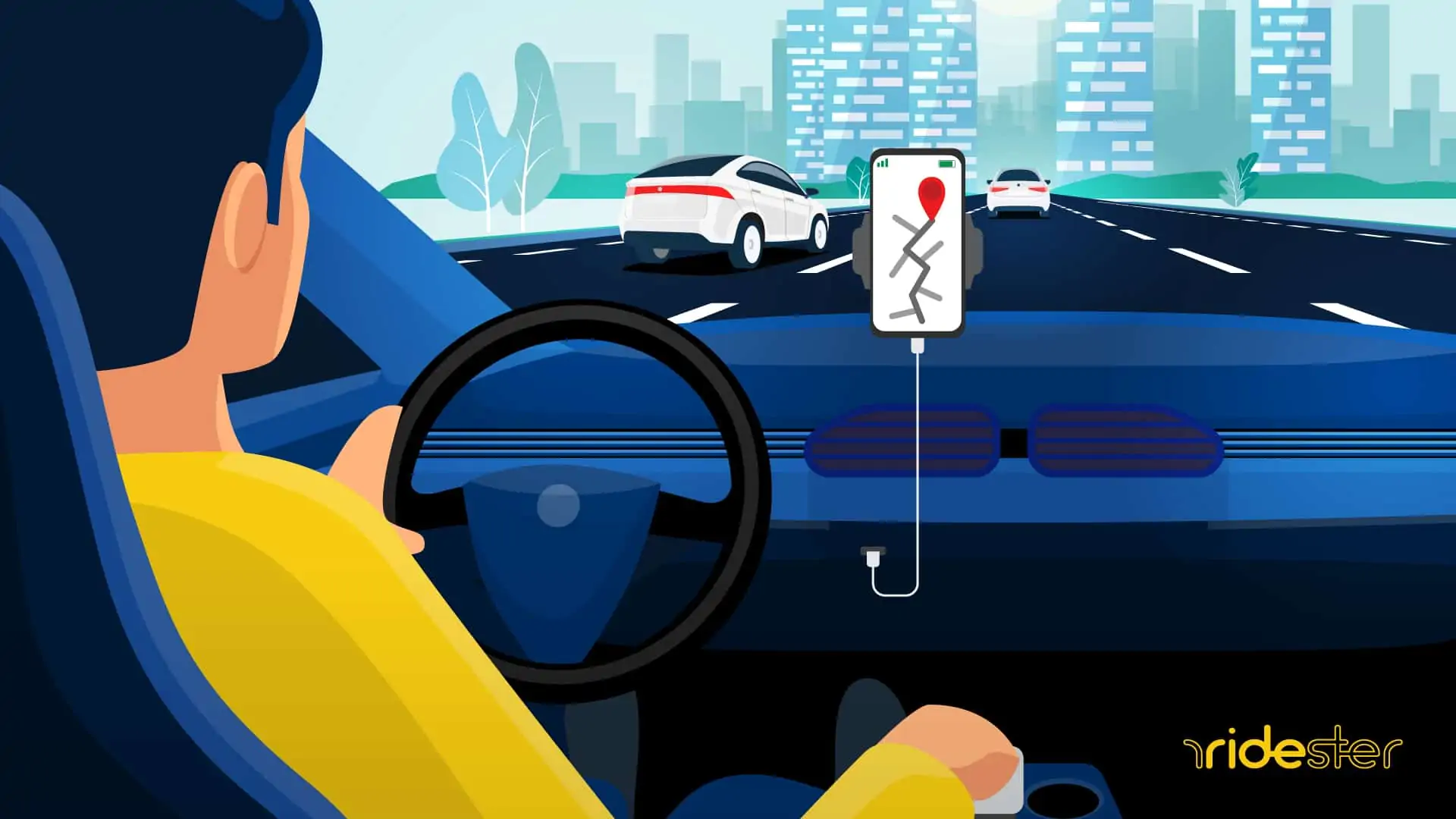
Uber has more investors and a much larger war chest, so it’s grown more popular throughout the nation and beyond. Uber has more drivers, riders, and is available in more cities than Lyft.
Uber has also gained traction in more countries. They’ve struck the right partnerships, expanded at the right times, and seized opportunities.
Uber is in 58 countries and 300 cities worldwide. Lyft, although aggressively expanding, is only available in roughly 46 states in the United States and in Canada.
Both companies offer rides 24/7 but passengers might have trouble requesting one at night if they live in a small town with not many drivers available.
But if you live in a bigger location like Los Angeles, San Francisco, or New York you should have no problems catching a ride any time of the day or night.
Brett’s Take: Thoughts From an Expert
Riders can expect quick, reliable Uber rides pretty much anywhere they go. Lyft has a large foothold in most US cities, but when traveling abroad, riders will likely be taking an Uber.
Uber offers many more positions than Lyft, in many more cities. They have a greater selection of vehicles in a greater selection of cities.
Winner: Uber. I think Uber has a much more reliable coverage area than Lyft. Lyft has done a great job of expanding in the United States to close this gap, but the divide is still very evident.
4. Vehicle Types/Options
When taking a look at the battle between Uber and Lyft, one of the biggest factors that set the two services apart is the vehicle options available to passengers.
Uber Services
Uber is a global player in not only transportation, but logistics as a whole. They offer a wide variety of services to meet the needs of pretty much whatever you can think of.
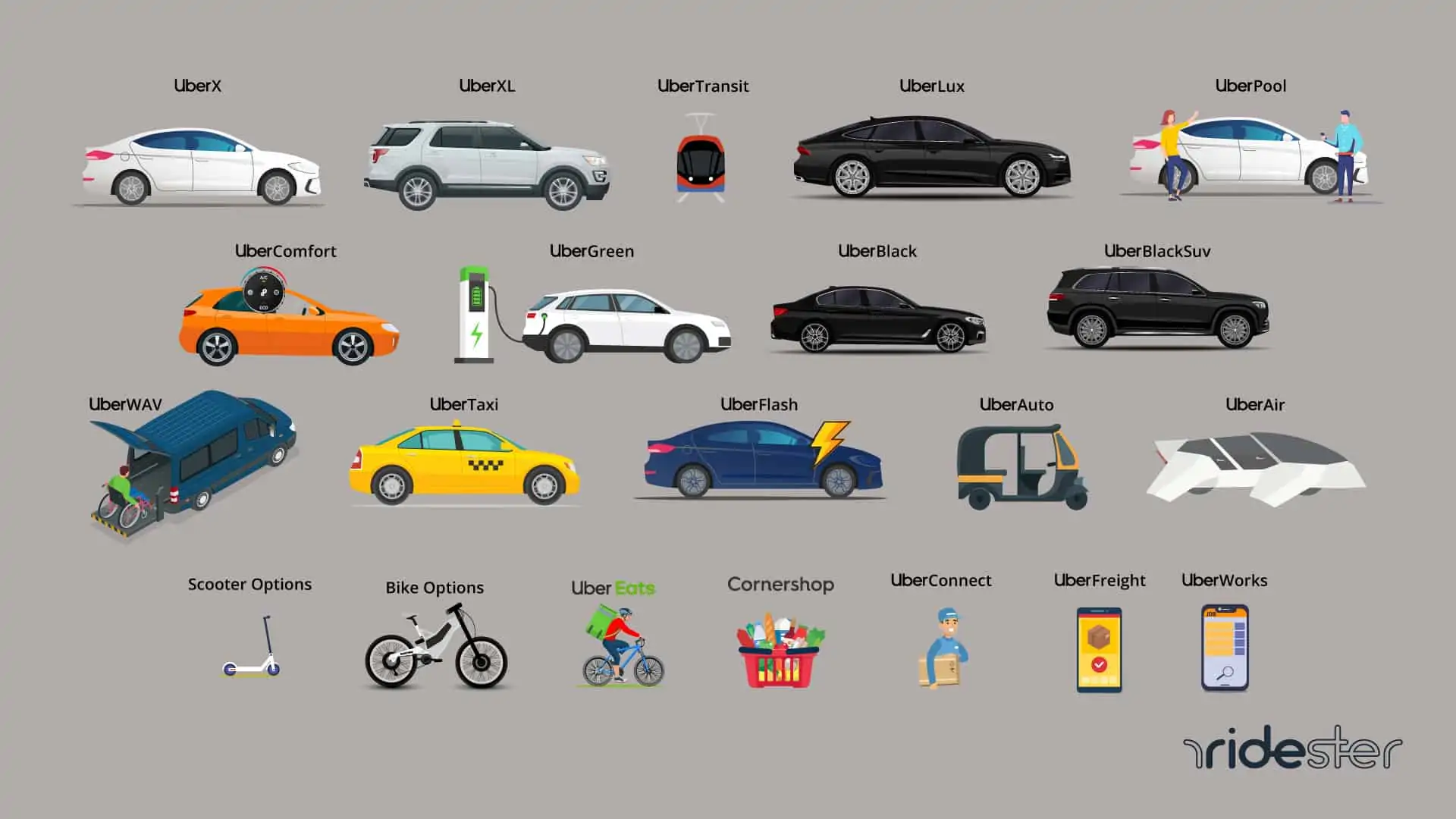
Uber offers a variety of rideshare services, catering to diverse needs:
- UberX: The standard service for up to four passengers in an everyday car.
- Uber Pool: Allows ride-sharing with others, reducing fare costs.
- Uber Comfort: Provides newer cars with extra legroom.
- UberXL: Suitable for groups of six.
- Uber Black and Uber Lux: High-end services with luxury vehicles and top-rated drivers.
- Uber SUV: Luxury service for six passengers.
- Uber Taxi: Supports local taxi services.
- Uber Green: Offers rides in electric vehicles.
- Uber WAV: Wheelchair-accessible vehicles.
- Uber Flash: Quick rides in either UberX or Uber Taxi.
- Uber Pet: Accommodates riders with pets.
- Uber Auto: Auto-rickshaw service.
While availability varies by location, you can generally find a good handful of these services in most cities, with most major cities having nearly all.
Besides rides, Uber also provides:
- Electric bike and scooter rentals in select cities.
- Uber Eats for restaurant food delivery.
- Uber Connect for package delivery between locations.
- Transit information in the app.
- Uber Freight connecting truckers with freight shippers.
- Boat transportation in some areas.
Lyft Services
Lyft, like Uber, offers a variety of services, but with its unique features and options, it caters to a slightly different user experience.
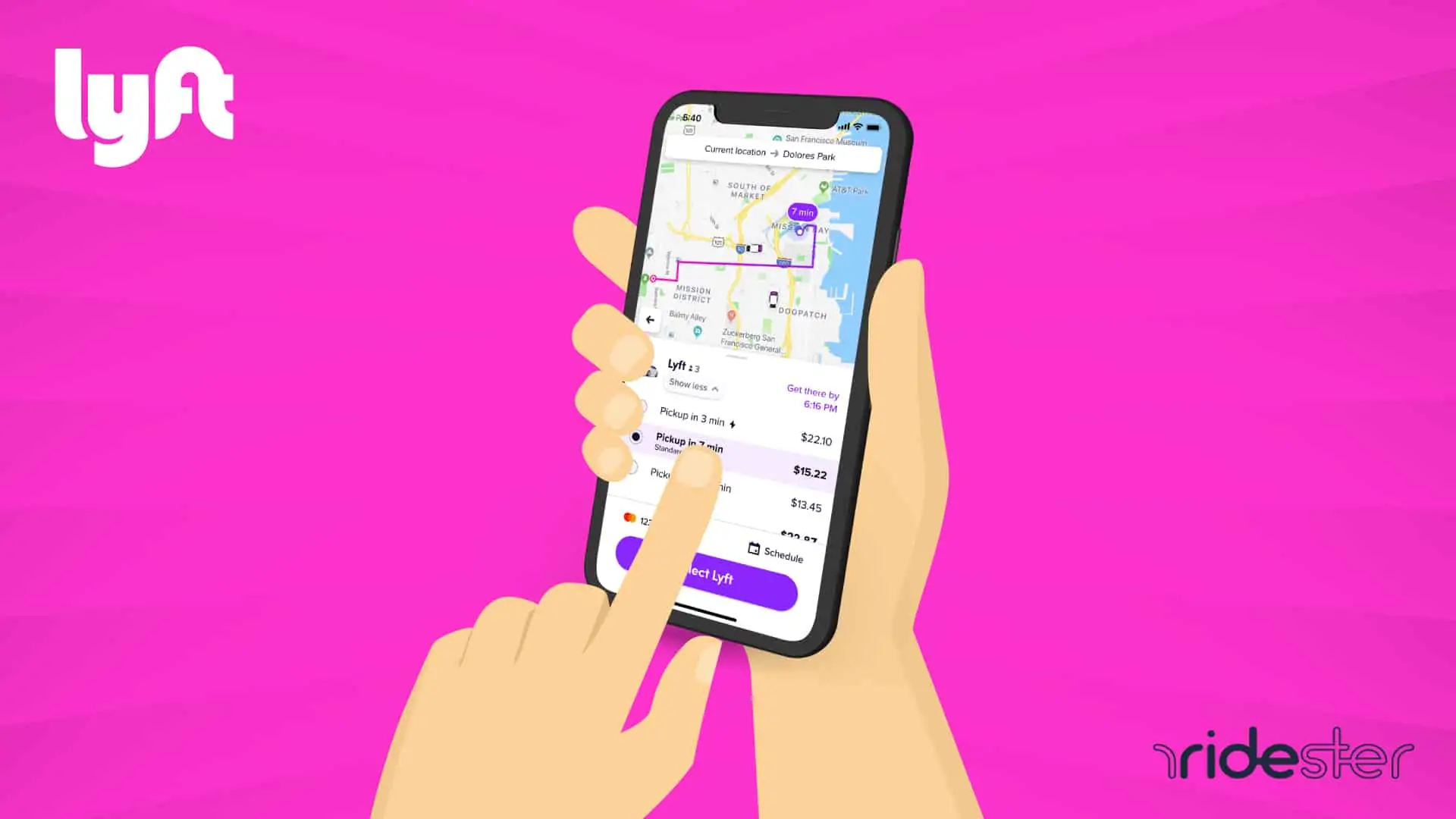
Lyft Ride Services
Lyft’s range of ride services includes:
- Lyft: The standard service for direct, private rides.
- Lyft XL: Suitable for larger groups.
- Lyft Lux: Offers rides in large, luxury vehicles with top-rated drivers.
- Priority Pickup: An upgrade option for quicker driver response.
- Preferred Mode: Allows riders to set preferences for noise level, temperature, and provides newer vehicles and high-rated drivers.
- Shared Rides: A cost-saving option by sharing the ride with others.
- Lyft Wait & Save: Ideal for those not in a hurry, offering rides at reduced costs.
Additional Lyft Services
Lyft also extends beyond just ride services:
- Bike and Scooter Access: Users can unlock bicycles and scooters through the app.
- Transit Schedules: The app provides local public transit information.
- Rental Car Reservations: Users can book rental cars directly through the app.
- Food Delivery: Similar to Uber Eats, but less extensive.
Aside from the vehicle options, there is a noticeable difference between the rider experiences within the services themselves.
Since Uber leans towards businesspeople, the drivers are professional, concise, and do the best to simply get you from point A to point B.
Lyft drivers, on the other hand, live up to their slogan “Your Friend With a Car”. After all, they once drove around with giant mustaches on the front of their vehicles. I still have one sitting in my closet.
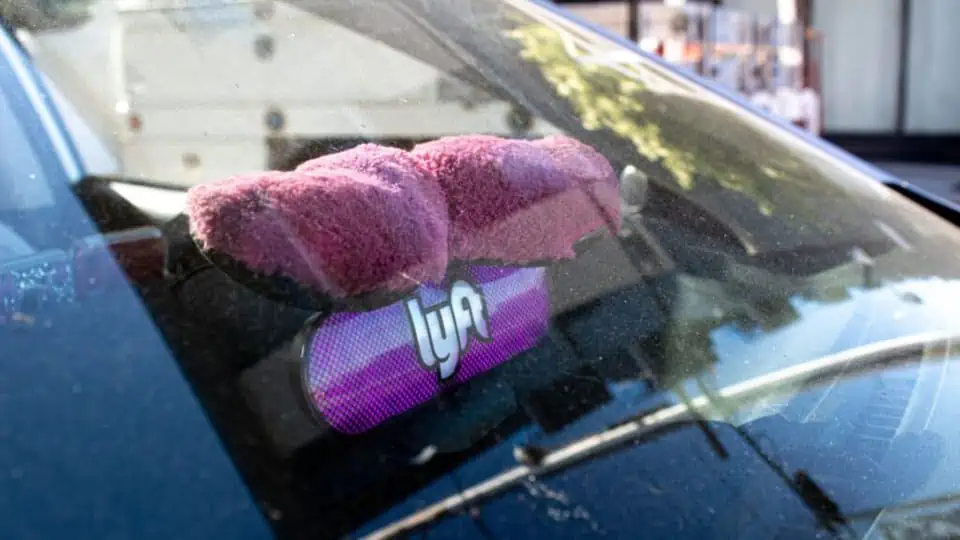
Lyft drivers tend to be friendly, open to conversation, and more fun than drivers on the Uber platform. Lyft riders are encouraged to sit in the front seat and interact with the driver.
Lyft drivers dress their cars up in creative days, wherein the rides are spruced up based on around themes like sports or karaoke. The whole experience is intended to inspire engagement and be fun and memorable.
If you’re looking for a quiet ride or a few minutes to focus on an upcoming presentation while riding from point A to point B, then Uber is the company for you.
The drivers through Uber is going to be dressed a bit more professionally. The driver is going to open the door for you and provide you with a more business-like ride to your destination.
In short, ride with Uber for a simple and professional drive. Ride with Lyft for something a bit more fun.
Brett’s Take: Thoughts From an Expert
Uber is geared more towards business riders and people who value quality and image, while Lyft is geared towards more relaxed users looking for a friendly ride.
From a convenience perspective, I use Lyft a lot, especially in times of high demand.
When there is a driver close by and I need a ride in a hurry, there are usually more Lyft rides due to Uber’s high prices – as I previously mentioned above.
However, from an optics perspective, I like the selection of vehicles that Uber offers.
If I need a cheap ride, UberPOOL has my back. If I’m on a business trip and want to impress a client, UberBLACK it is.
Winner: Lyft does a good job of being friendly, but that only gets me so far when I need a ride.
I have to go with Uber on this one because there are way more types of rides available. I also don’t usually call rides during times of high demand, so that eliminates Lyft’s edge in this category.
5. Uber vs Lyft: Safety
Uber and Lyft both have safety issues, yet they have taken many measures to improve their platforms.
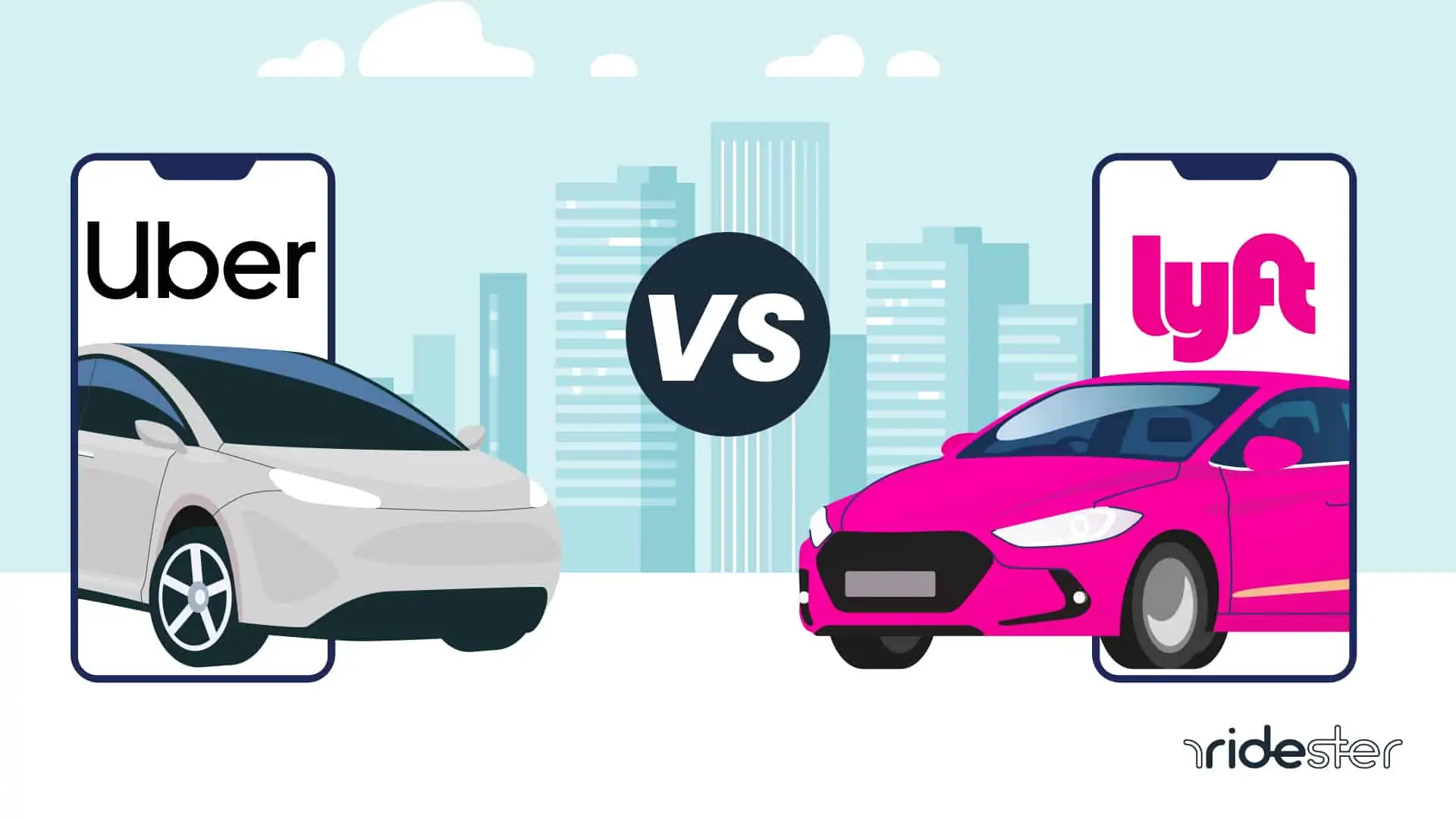
Is Uber Safe?
Uber is generally safe, hiring only drivers with clean records. It allows location sharing for extra safety.
Drivers undergo background checks for a clean driving and criminal record, and must have liability insurance. Requirements vary by city, including age, car standards, and insurance. Drivers don’t receive special training, but Uber provides online safety resources.
The app displays the driver’s details, including license plate and picture. Users can see driver and rider ratings, share their location, contact emergency services through the app, and share trip details with contacts. Uber maintains user privacy and removes accounts with low ratings.
Despite safety measures, there have been serious incidents, including driver assaults and abductions, highlighted by a 2018 CNN report on 103 drivers from Uber accused of sexual assault.
Is Lyft Safe?
Lyft gained popularity as a safer rideshare option compared to Uber, but has faced safety allegations.
For driver vetting and qualifications, Lyft requires a valid driver’s license, criminal background check, clean driving record, vehicle registration, car insurance, and a four-door vehicle.
These requirements vary by city, and Lyft also mandates a safety education program for drivers. Additionally, Lyft conducts annual background checks and monitors driving records.
In terms of app safety features, Lyft provides the driver’s photo, car details, and license plate information. Riders can see driver ratings and share their location with family and friends.
The app includes an emergency services contact feature, and Lyft proactively reaches out if unusual ride activity is detected. The company avoids matching riders with poorly rated drivers and removes users who fall below a certain rating.
However, Lyft has had notable safety incidents. These include a driver behaving inappropriately while watching a rider, an incident where a previously fired driver for assault was later seen driving with a Lyft sign, and delays in responding to assault allegations, sometimes taking months or years.
A 2018 CNN investigation also highlighted safety concerns within ride-sharing services, including Lyft.
Brett’s Take: Thoughts From an Expert
I’ve personally only felt unsafe a very few times while using rideshare services. When I reported the issues to Uber and Lyft, they acted swiftly and effectively.
I have noticed that Uber and Lyft have done a good job of responding to and learning from their safety issues that have arisen over the years.
For instance, just look around both of the apps and you’ll notice the many safety features that have recently appeared. It’s clear both apps are taking rider safety incredibly seriously.
For more on this topic, check out our blog post, “Is Uber or Lyft Safer for Riders?“
Winner: While both companies’ safety regulations are about the same, Uber does pull ahead just a bit. While they were once the black sheep with a scarred reputation, their new CEO has done a great job of turning things around – ESPECIALLY in the area of rider and driver safety.
5. Uber vs. Lyft Customer Support
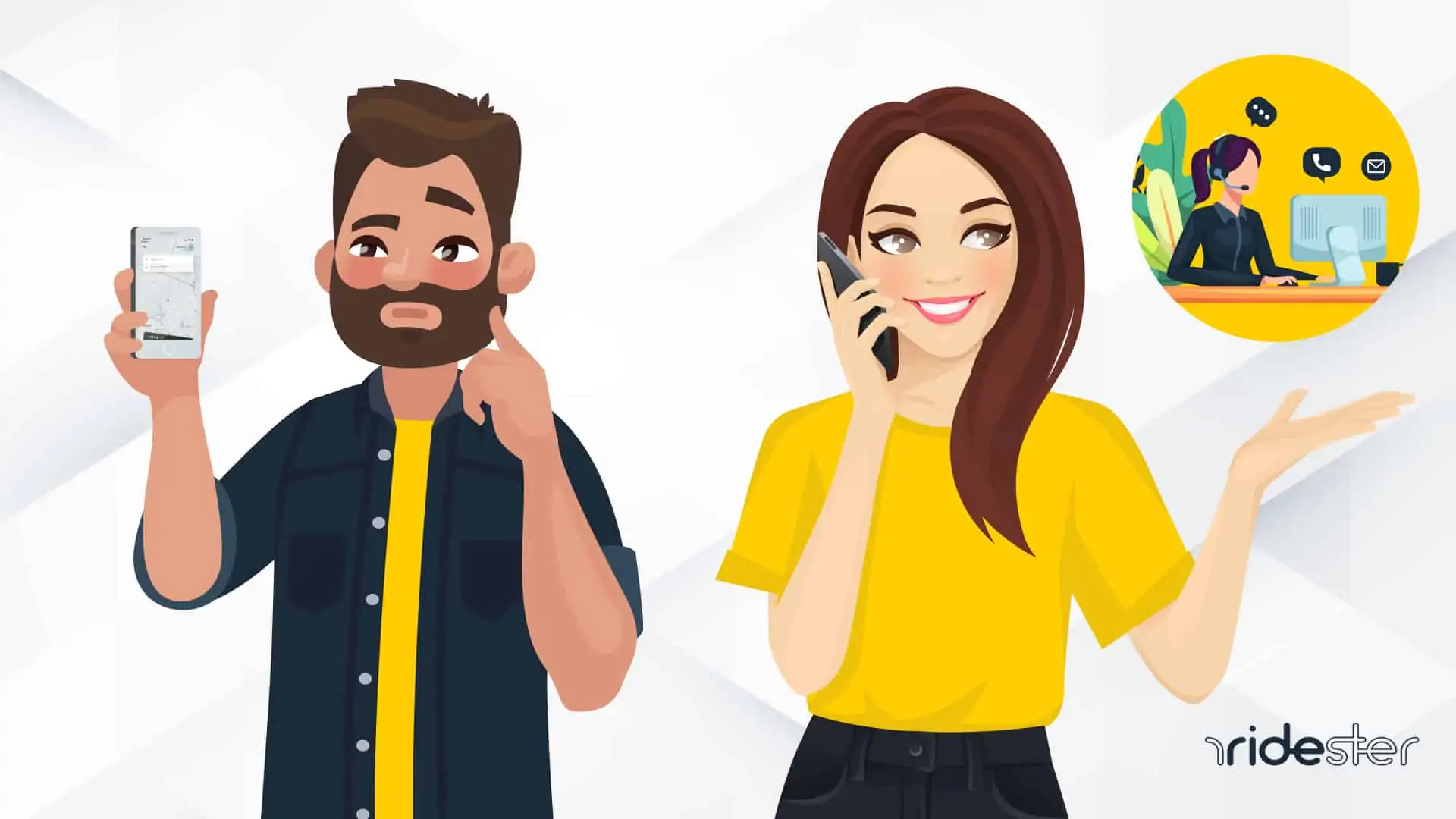
When Uber and Lyft first started out, customer service seemed to be the last thing on their minds. Now, however, as they have evened out in market share, they appear to be prioritizing customer experience as a way to retain customers.
Once they get customers using the platform, they want to keep them there. One way of doing this is building a customer service infrastructure that eliminates customer friction while riding.
Riders and drivers can get in touch through:
- in-app support
- website support
- critical response lines
After digging around the forums and comment sections of various websites, it appears that Lyft is a bit more helpful in solving problems than Uber.
Uber gives a bunch of canned responses readily available on their Help center, while Lyft actually takes time to answer questions.From my experience, Lyft reps seem to care and go out of their way to try to solve your problems.
Related:
Brett’s Take: Thoughts From an Expert
If you have a generic question about Uber or Lyft, take a look at their help sections before you ask, otherwise, you will waste a lot of time. Both companies will likely give you a canned response, but Lyft provides more detail.
For more critical matters, both companies have a critical response line that provides near-instant support to resolve issues like accidents, bad behavior from drivers, etc.
Lyft representatives are friendly, while Uber reps seem to be constantly overwhelmed. This leads to an abundance of canned responses readily available on their Help center, while Lyft actually takes time to answer questions.
Winner: I’m recommending Lyft as the winner here. Uber support offers canned responses, and Lyft support typically dives a little deeper into the issue.
6. Uber vs. Lyft Innovation
As Uber and Lyft expand, both companies are striking new partnerships to break into new areas.
Both companies are fierce competitors, competing heavily on price, but also scrambling to create the latest automotive innovations. These types of innovations help cut operation costs and ride fares, leading to greater passenger demand and higher profits and valuations.
Uber offers the following key innovations:
- (1) A tiered approach meaning that if the consumer wants a ride beyond the average, he/she can request “semi-luxury” or even “luxury”.
- (2) a rigorous driver rating system.
- (3) a surge pricing system that always encourages drivers to be available during high-demand.
- (4) a built-in tipping feature.
Lyft offers its consumers the ability to participate in what the company calls, “Lyft Line.” This means that consumers who are riding along the same routes can ride together and split the cost.
Additionally, Lyft offers what they call, “Lyft Plus” meaning groups of six passengers or more riding together. Lyft also offers the ability for the consumer to tip the driver.
Both companies are trying to implement self-driving cars but these aren’t ready, especially since the deadly crash involving a self-driving Uber SUV in Arizona that killed a pedestrian.
Brett’s Take: Thoughts From an Expert
Both companies are making incredibly large investments in new technologies. I think Uber’s acquisition of Otto puts them one step ahead of Lyft. If they can move on past the lawsuit with Waymo, they’ll advance their technology enough to be even more of a powerhouse.
As innovation advances, so do the economies of scale. In the future, riders can expect prices to drop and rides to get cheaper.
Uber and Lyft have assured drivers that with the rise of autonomous cars, their jobs will still be safe. But these are likely empty promises.
Winner: Uber
7. Uber and Lyft Brand Image
Winner: Lyft
Brett’s Take: Thoughts From an Expert
Uber has been involved in countless scandals, harassment claims, lawsuits, and bad PR. It seems like they just can’t catch a break.
On the contrary, you rarely hear bad PR about Lyft, and when you do, they own their mistakes and move forward.
As Uber scandals pile on, many riders are deactivating their accounts and switching to Lyft. Riders will see more incentives and positive marketing campaigns from Uber to lure those ex-passengers back, so riders should be on a lookout for these cool incentives as time goes on.
Lyft drivers are seeing a strong flow of riders coming from Uber- thereby increasing the demand and inflating prices. Lyft drivers should enjoy this increase while it lasts because I think it’s only temporary.
Winner: Lyft. Lyft trumps Uber in this one, as they’ve been able to fly under the radar and for the most part stay out of the negative spotlight. Uber clearly has a brand image problem which they need to work through.
Frequently Asked Questions
What pays more LYFT or Uber?
Lyft generally takes a smaller cut than Uber. But Uber’s signup bonus is often bigger. In general, drivers report making more money per hour driving for Lyft due to increased tips, better Prime Time pricing, and the smaller cut compared to Uber.
Can you do Lyft and Uber at the same time?
Yes, drivers can work for both apps at the same time. Drivers cannot pick-up multiple passengers at the same time, but they can switch between Uber and Lyft. Drivers who work for both apps can make more money by locating the closest pick-up locations and by capitalizing on Surge and Prime Time pricing.
Tipping is optional for Uber and Lyft. When Uber was first introduced, it did not have an in-app tipping function, this has since changed to align more with Lyft.
Passengers should absolutely tip their driver while using Uber if the service was acceptable. Many drivers depend on tips to make a living. Tips can be given either in cash or through the app. Drivers receive 100% of tips received through the app.
Can you pay cash for Lyft or Uber
No. Uber and Lyft are not designed with cash in mind. Before a rider books a trip with Uber or Lyft, they must input a payment method (debit or credit card). When a trip is completed, passengers are automatically charged using the selected payment method. Drivers are allowed to accept cash tips from passengers.
Uber vs Lyft: Who Wins?
Uber beats Lyft on vehicle options, coverage areas, and innovation. On the other hand, Lyft wins on pricing, customer support, and brand image.
At the end of the day, the battle boils down to who you are, what features you’re looking for, and your value system. I use Uber for some things, but Lyft for others.


